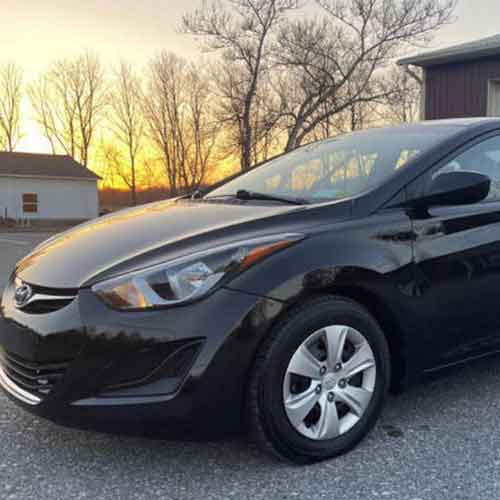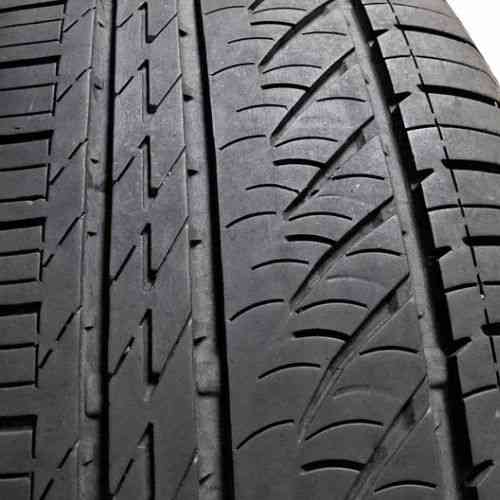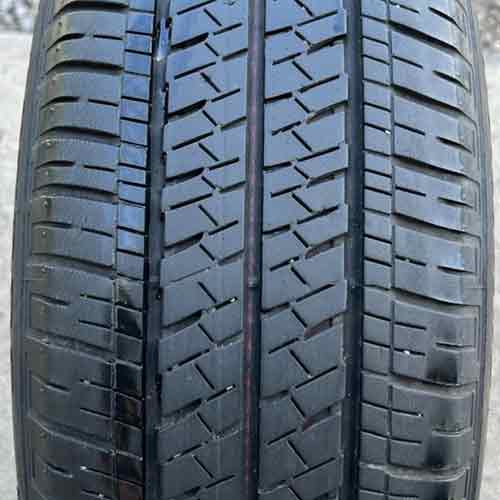Among the two, the Bridgestone Ecopia is specifically engineered to enhance fuel efficiency and minimize environmental impact, whereas the Bridgestone Turanza is tailored to deliver a more serene and comfortable driving experience (relatively). Let’s see which tire is a better fit for you.

As a tire engineer, my evaluations indicate that the Bridgestone Turanza tires shine in dry conditions, offering outstanding directional grip, handling, and a notable reduction in noise. However, they exhibit somewhat average performance in wet conditions and ride comfort compared to their counterpart. In contrast, the Bridgestone Ecopia tires, while slightly underperforming in dry scenarios, excel in wet and winter conditions, providing enhanced fuel efficiency and a smoother driving experience. It’s worth noting, though, that they tend to be noisier.
Table of Contents
Dry Performance
The dry performance of a tire is a crucial aspect, and its defined by two key components: directional grip and handling.
Let’s talk both.
Directional Grip
Directional grip is associated with the tire’s braking ability and is mainly influenced by the central tread area. But why center?
Well because this area of the tire gets to have the most pressure on it, as the tire rolls straight.
Now here, the Bridgestone Turanza tires tend to take the lead. These tires basically offer longitudinally aligned ribs that are more compact across all series, where they are also supplemented by biters in the form of in-groove notches in all directions.
So one, you get more rubber to road contact, and two, you get tread biting with that as well.
On the other side, the Bridgestone Ecopia tires having a slightly more open tread design (across their tire range), do not perform as well.
Needless to say, their wider lateral grooves obstruct the tread rubber’s proper contact with the road.
Dry Handling

Handling relates to the tire’s behavior during cornering. And here shoulder lugs play a significant role here as they form a tighter bond with the road (compared to lugs in the middle), during turns due to the highest weight concentration.
Basically as the tire corners, the inertia puts more pressure on the edges of the tread.
Now having said that, the Bridgestone Turanza series is taking the lead here, with more compacted shoulder lugs that connect better with the road as the tire corners.
Moreover, these tires also feature a relatively stiffer compound composition, resulting in the lugs making a firmer contact with the road. And that subsequently, lowers over and under-steering.
On the other side, the Bridgestone Ecopia tires fall short (predominately I mean). These tires mostly have wider lateral grooves and chunky in-groove notches in the shoulder area, and both thees negatively impact overall handling properties.
Wet Traction
When it comes to wet traction, the Bridgestone Ecopia tires are taking the lead.
These tires feature a balanced mixture of siping, notches, and chamfered edges, along with tread flexibility, which is also a crucial combination for maintaining strong grip on wet roads.
Sipes basically (literally) suck up water particles in their slits, while the biters grip on the relatively dried up surface. And with a flexible tread compound, all the biters/sipes, get to flex with more ease, allowing for efficient water removal, and grip.
In contrast, the Bridgestone Turanza series lacks in providing ample siping, as these tires mostly have in-groove notches, and those do not provide sufficient wet gripping capabilities.
Though its worth noting that both tire series perform well in hydroplaning resistance, another key factor in wet performance, making it difficult to declare a clear winner in this aspect.
Winter Performance
In the world of winter traction, the Bridgestone Ecopia series is not going to disappoint you at all.
These tires (predominately) offerdesign, which includes bolder lugs, and these efficiently removes slush and snow, providing superior forward-moving inertia.
Additionally, these tires have a narrower average section width and greater weight, and both these factors basically exert more pressure on the snow, effectively capturing particles in its tread voids.
But why is that important? Well, because the lodged snow can now come in contact with the ground, enhancing snow-on-snow contact. And since snow sticks better to other snowflakes than to rubber, it creates greater frictional forces.
On the other hand, although the Bridgestone Turanza series lacks this feature, which is particularly helpful on fluffy snow, it does offer a greater number of biters, providing superior traction on ice.
Side Note: It is important to note that neither of the tire series carries the 3 Peak Mountain Snowflake (3PMSF) rating, which primarily tells you about the acceleration (and does not relate to snow braking and handling). Basically a tire with this rating outperforms an average all-season tire by approximately 10%.
Fuel Consumption
Fuel consumption is directly proportional to the rolling resistance, which is impacted by several variables, where the two most important ones are the weight and tread composition.
Now keeping that in mind, it can be explained why the Bridgestone Ecopia tires are taking the lead here, where they offer a marginally lower rolling resistance values, resulting in enhanced fuel efficiency.
Although not immediately apparent upon visual inspection, these tires offer a more streamlined tread pattern across all their models.
And yes, they also create a firmer connection with the road, and that minimizes the unnecessary movement of the lugs as the tire curves, brakes, or accelerates.
Furthermore, the tires also feature a comparatively lighter construction, so their lugs don’t bear as much pressure on them, as Turanza tires do.
On-Road Noise

Simply put, noise is generated with air.
Air particles mostly enter through the shoulder voids and reverberates against the walls of the tread, creating what they call tread noise. And then, that noise waves create echo, as the reflect off the tread surface, adding to overall noise production.
Now having said that, it can be seen why the Bridgestone Turanza tires where they typically incorporate blockers between the shoulder lugs don’t allow as much air to enter in the first place.
Moreover, the noise generated is also tackled by pitch sequencing. This technique involves altering the tread block geometry, causing air particles striking them to generate varying tones which then try to cancel out each other.
Now the Ecopia tires also have this variable pitch technology, but they are still louder, simply because they permit more air to circulate and reverberate against the tread walls, creating greater decibels.
On-Road Vibrations
The ride quality is profoundly affected by its internal and external composition. That’s because generally, tires composed of softer tread provide a more pleasant driving experience, as they soak up the bumps better.
The Bridgestone Ecopia series excels in this regard, employing a relatively spongier tread rubber, which is basically enriched with silica and a softer inner cap ply.
These elements efficiently absorb road shocks and irregularities, thereby enhancing ride comfort.
The Turanza series on the other hand, despite featuring a flexible internal polyester casing still can’t offer similar impact comfort performance, as their outer construction consist of a stiffer rubber.
This although helps with tread life, it also creates a bumpier ride in comparison.
Conclusion
Both series showcase distinct strengths, designed for different driving conditions and preferences.
The Bridgestone Turanza tires excel in dry performance due to their compact longitudinally aligned ribs, in-groove notches, and compacted shoulder lugs. And this results in shorter braking distances, more direct steering response, and yes, an appreciable lateral traction as well.
On the other hand, the Bridgestone Ecopia tires showcase superior wet and winter traction, fuel economy, and ride comfort, where their balanced mix of siping, notches, and chamfered edges, along with tread flexibility, provide a strong grip on watery conditions.
And yes, with lighter construction you also get enhanced fuel efficiency.
And with softer tread rubber enriched with silica and a softer inner cap ply, you also get better ride comfort too.